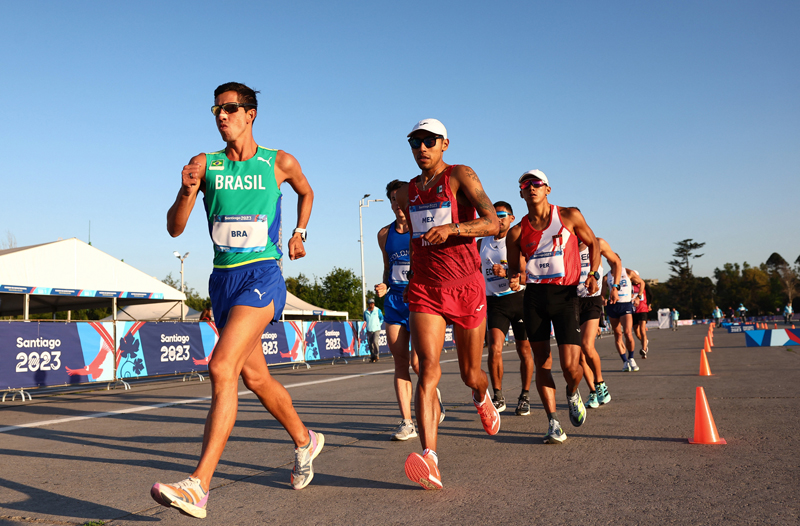Weight management: is protein better than nothing?

There’s no arguing with the science of exercise physiology and sports nutrition; if maximising your performance on the day, or later that week is your goal, you need to ensure you’re getting adequate carbohydrate before, during and after exercise. However, over recent years a number of researchers have begun to speculate that always training with ample carbohydrate available to the working muscles might not be the best way to produce fitness gains in the longer term – ie over weeks and months. This thinking helps explain the rise in popularity of the ‘train low, race high’ theory, which is practiced by many athletes today.
Thrifty genes
Basically the train low, race high’ theory says that because humans evolved as hunter-gatherers in an environment where carbohydrate was not freely available, our ancestors made use of so-called ‘thrifty’ genes in the muscles. By improving fat metabolism and prolonging endurance, these thrifty genes would have enabled our forebears to hunt, run and survive without muscles crammed full of carbohydrate (glycogen).
Compared to our ancient forebears, 21st century humans have it easy. With modern agricultural practices and no need to hunt and forage for food, most of us have free access to food, 24/7. Now compare our feeding habits to our hunter-gatherer ancestors. Although they managed to sustain themselves, they would have periodically faced periods of famine when food was in scarce supply. Even during periods of relative abundance, there would have been short periods of time – perhaps just a day or two - with no access to food. Today we call this fasting – back then it was just the reality of life!
What’s fascinating is that there’s convincing evidence that our genetic makeup has remained essentially unchanged over the past 10,000 years, which almost certainly has profound implications for today’s athletes. In recent years, a number of these thrifty exercise genes involved in the adaptation to exercise and training have been identified, and some of them are affected by the biochemical environment in the muscle – for example, how much muscle glycogen is present or circulating glucose levels when exercise is performed(1-3).
Weight management and training low
Many scientists are now convinced that (thanks to our thrifty genes), lower levels of muscle glycogen during training might stimulate certain metabolic pathways in the body, resulting in enhanced fat burning and better muscular adaptation to training(4). The evidence is actually very persuasive; numerous human and animal studies have shown that curtailing carbohydrate intake before and during exercise enhances the rate of fat oxidation and the proportion of energy that is derived from fat, thus sparing muscle glycogen reserves and helping to reduce body fat(5-10).
Low-carbohydrate training options
If low-carbohydrate training delivers fat-loss benefits and ‘teaches’ muscles to conserve glycogen, why don’t endurance athletes use this approach all the time? There are two main reasons: firstly, studies show that training in a low-carbohydrate state does not enhance performance in a racing environment. In a landmark study on this topic, a Professor Louise Burke who is a world authority in this area of research concluded that: “Despite increasing fat oxidation and adaptive responses, and reducing the reliance on carbohydrate utilisation during exercise, there is no clear evidence that these (low-carbohydrate) strategies enhance exercise performance”(11). Also, performing high-quality, intense training – the sort that’s proven to significantly enhance aerobic performance – is hard in a glycogen-depleted state!
A second reason is that even allowing for the fat-oxidation/fat loss benefits that low-carbohydrate training brings, there are a number of potential drawbacks. These include:
· Increased secretion of stress hormones leading to lowered post-exercise immunity and increased risk of upper respiratory tract infections;
· Reduced length of training sessions due to fatigue induced by low glycogen (this could be important in preparation for a long-distance event);
· Increased risk of burnout and overtraining;
· Reduced hydration in hot-weather training (some carbohydrate in a drink can help transport fluid from the gut into the body);
· Increased muscle tissue damage and breakdown, leading to potential losses in muscle mass;
· Possible strength losses in sports where simultaneous strength and endurance training is required.
Minimizing low-carbohydrate drawbacks
Is it possible to incorporate some of the potential gains of low-carbohydrate training (ie increased fat burning), while at the same time ensuring that muscles maintain their carbohydrate burning efficiency and are able to perform intense training sessions – a sort of halfway house? This has been the goal of some researchers, who have been studying alternative approaches to train low – approaches that can help stimulate the thrifty genes and maximise training adaptation, but with fewer drawbacks. Some of these different approaches are outlined in figure 1. Essentially, all these alternative approaches involve strategies where training takes place when muscles are at least partially depleted in glycogen (to activate thrifty genes).
Figure 1: Alternative approaches to chronic low-carbohydrate training
You need to be logged in to continue reading.
Please register for limited access or take a 30-day risk-free trial of Sports Performance Bulletin to experience the full benefits of a subscription. TAKE A RISK-FREE TRIAL
TAKE A RISK-FREE TRIAL
Newsletter Sign Up
Testimonials
Dr. Alexandra Fandetti-Robin, Back & Body Chiropractic
Elspeth Cowell MSCh DpodM SRCh HCPC reg
William Hunter, Nuffield Health
Newsletter Sign Up
Coaches Testimonials
Dr. Alexandra Fandetti-Robin, Back & Body Chiropractic
Elspeth Cowell MSCh DpodM SRCh HCPC reg
William Hunter, Nuffield Health
Keep up with latest sports science research and apply it to maximize performance
Today you have the chance to join a group of athletes, and sports coaches/trainers who all have something special in common...
They use the latest research to improve performance for themselves and their clients - both athletes and sports teams - with help from global specialists in the fields of sports science, sports medicine and sports psychology.
They do this by reading Sports Performance Bulletin, an easy-to-digest but serious-minded journal dedicated to high performance sports. SPB offers a wealth of information and insight into the latest research, in an easily-accessible and understood format, along with a wealth of practical recommendations.
*includes 3 coaching manuals
Get Inspired
All the latest techniques and approaches
Sports Performance Bulletin helps dedicated endurance athletes improve their performance. Sense-checking the latest sports science research, and sourcing evidence and case studies to support findings, Sports Performance Bulletin turns proven insights into easily digestible practical advice. Supporting athletes, coaches and professionals who wish to ensure their guidance and programmes are kept right up to date and based on credible science.









